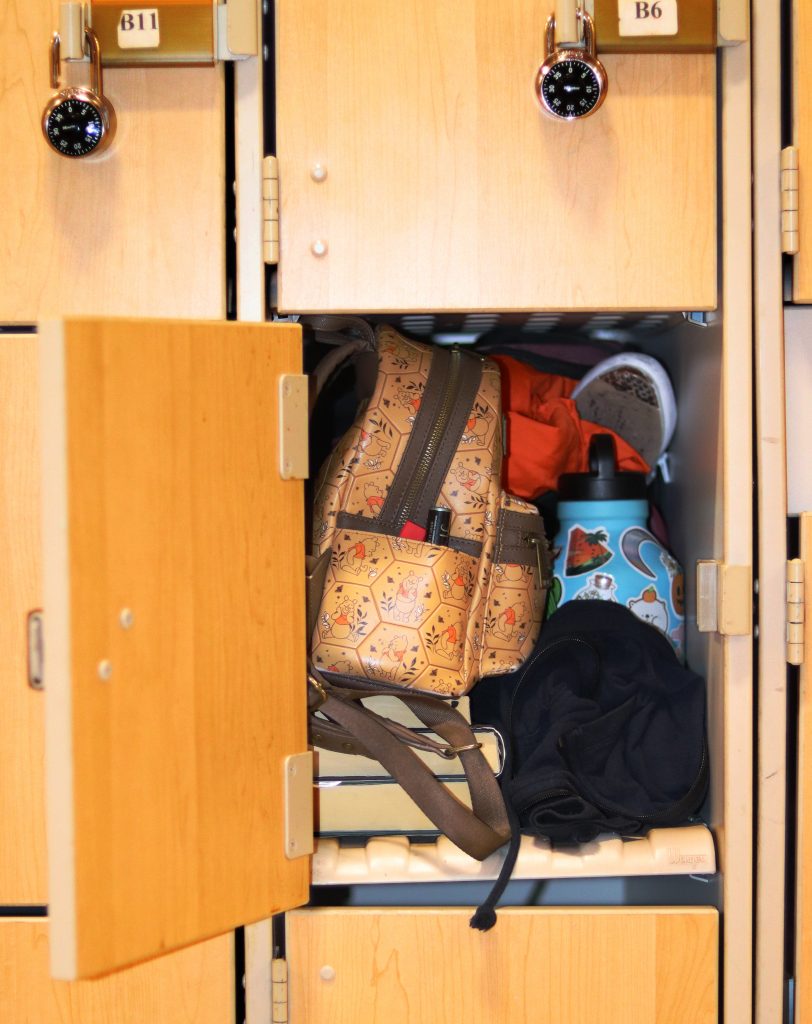ARTS: Art students hope to take a load off their backs
By Jose Figueroa
Bridge contributing writer
Published Thursday, Sept. 12, 2024
Not everyone realizes how many course materials and extra carry weight is required for studio art majors. Art encompasses a lot of media, from digital to clay, with a wide spectrum of paints, along with required tools and bases—canvases, watercolor paper, weighted paper, etc.
With such a spectrum of media and the Texas A&M International University Department of Fine Art requirement to take at least two different types per semester, an art major has to lug at least two types of media around. For example, an average visual art student carries clay, carving tools, two sketch books exceeding 40 inches in length, carbon, pencils, erasers and two notebooks—all for just two classes. This weighs approximately 50 pounds for their daily journeys between home and school.

A student’s locker is filled in the Center for the Fine and Performing Arts in this photo illustration taken on Sept. 24.
“It would be very beneficial having lockers on the second floor,” art major Belma Veliz said. “Students can save time by getting their materials to the classrooms … there’s times where I’m carrying a lot of my materials in my backpack and it can get really annoying going back and forth.”
Veliz estimates they carry 10 to 15 pounds of course materials at least three times per week from home to campus and back.
The average TAMIU student will eventually notice that some of their classmates travel from Mexico, cross the bridge on foot, take a 20-minute bus, and walk from one building to another on campus at least three times a week. They do all that while carrying a weight of about 50 pounds from their residence to school, all because TAMIU installations lack space for art students to leave materials.
Some students even carry their materials home on the bus, allowing their materials and work to get lost, stolen or damaged in the process. They are required to take their materials home every day, with no place to leave them on campus. If they were to leave them in class, they run the chance of them going “missing.” Any student who has taken at least one art course can recall that they did not have lockers for their materials, such as those in the same building, reserved for music and dance students.
While most classes require basic materials, such as a notebook and a writing instrument, art classes are quite demanding, both due to the density of the materials used, alongside the price, for example, the same student, reportedly spent approximately more than $150 on materials for a single class, materials which he is responsible to bring to school, transporting so many materials, and with small parts is bound to get complicated, and he relates having lost some on the process, something that could have easily been avoided by being provided with a locker to leave them at school.
Former faculty member Paola Guzman, who worked as a mentor, said freshmen would often complain about the “bulky” nature of materials at school, and about having back-to-back classes. Some had to carry materials from the Center for the Fine and Performing Arts to other buildings, such as the Academic Innovation Center or the Sue & Radcliffe Killam Library.
“I have seen students carrying bags half their size from the art building to our office, and then back to their classes,” Guzman recalled.
She sympathized and shared the idea that art students should have lockers for their materials; she also indicated it might even boost their grades and lower their stress levels.
The CFPA already includes lockers for the majority, mostly occupied by those in music, something new students may be unaware they can ask for, and senior art students, even if aware, rarely get them due to demand.
“I’m aware most, if not all, art classes require plenty of materials, including my course, and I agree, art students should have their own lockers on the second floor,” design adjunct Juan Mendez said. “This would allow them to leave them here and not have to carry them all throughout campus, or back home.”
